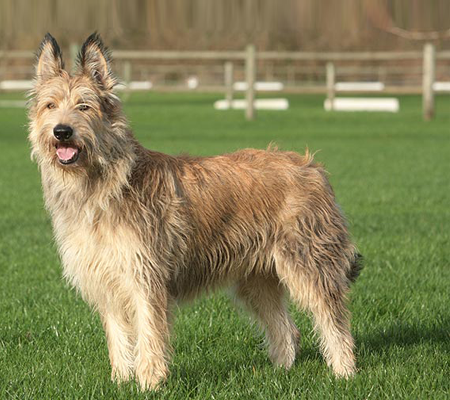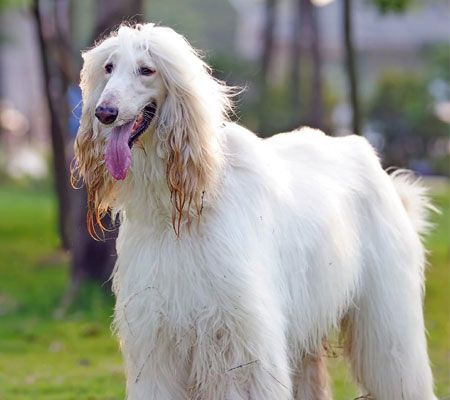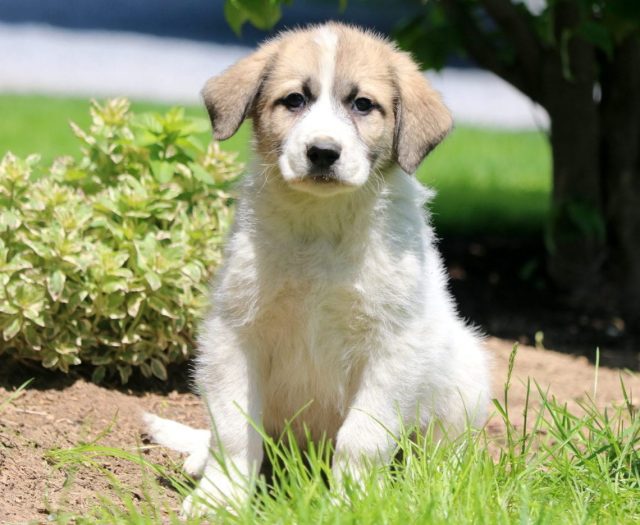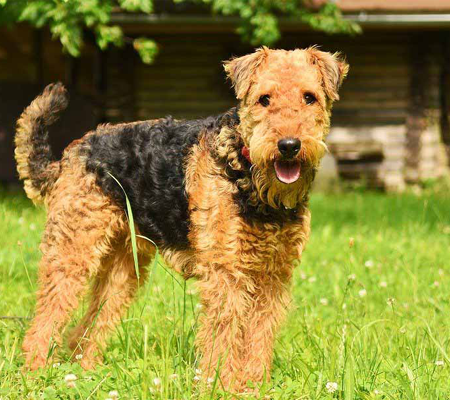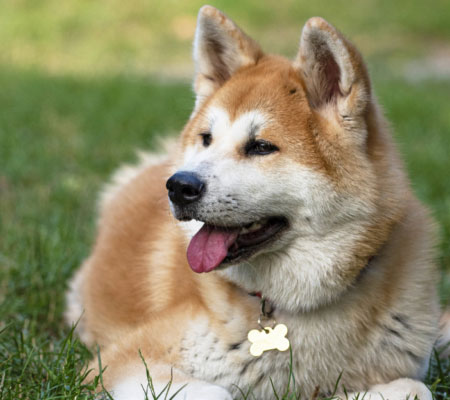This unique Egyptian sheepdog is a diligent and
strong dog that also makes a wonderful family pet. When working, they are
fearless and would protect their flock with their lives. When not working, the
Armant enjoys playing and is a good playmate for youngsters. They are often
easy to teach and have a strong desire to please their loved ones. Strangers do
not sit well with them, and they will raise the alarm if one approaches their
house. This breed has a lot of energy and needs to be able to run and play
outside. They also require a large number of toys to keep them engaged when
left alone.
Armant Dogs Highlights
Breed Size
Medium
Nature
Gentle, Friendly, Playful, Outgoing, Willful
Energy Level
Active
Intelligence
Medium
Barking Level
When Necessary
Coat Length
Short
Breed Group
Working
Droll Amount
Low
Good with
Familes, Children, Dog
Feed Level
Medium, High
Colour Type
Multiple, the most common of which are the black, black and tan, gray and gray-yellow variations
Other Facts
Armant dogs are loyal, friendly and patient with thier owners.
Dog History
The Armant first appeared in Egypt in the early
1900s. They were originally employed as guard dogs, but farmers rapidly
realised their worth as a herding dog. Many experts think that the Armant was created
by crossing the Briard with different European canines that Napoleon's men
brought into Egypt. Another opinion is that the breed arose from Egyptian
agricultural dogs over a long period of time, with no impact from the Briard.
This breed was given the name Armant after the Egyptian town where they were
most common. Another, less plausible, idea is that the Armant was created by
crossing Bearded Collie and Newfoundland dogs with Egyptian agricultural dogs
derived from European herding breeds.
The ancient town of Armant is located near Thebes
on the west bank of the Nile River in Egypt's upper region. It was previously
known as Hermonthis by the Greeks and served as the coronation site for ancient
monarchs, as well as the home of the sun worship. According to legend, Mont,
the god of battle, formerly worshipped near Armant. Mont arrived in human
shape, but with a hawk's head instead of a human's. This breed possesses a
fearlessness in the face of predators that matches the historic reputation of
the town after which they were named. They are bold and fierce towards
predators that endanger their herd, yet gentle and caring towards their family.
This characteristic contributes to a good family pet.
18-22 inch 18-25 kg 13-15 year
Height

Weight

Life Span
Health and Care
To keep in shape, refresh their minds, and
maintain excellent health, soldiers must engage in regular physical exercise.
Physical exercise on a daily basis also aids armants in avoiding boredom, which
can contribute to disruptive conduct. Many of your armant's innate desires to
dig, chase, herd, chew, and retrieve may be relieved by getting out. Individual
exercise requirements vary depending on your armant's age and health, but ten
minutes at the rear of the house and a couple of daily trips down the street
are unlikely to suffice. If your armant is a six to eighteen-month-old
adolescent, her needs will most likely be higher.
Dog Breed Care Tips and
Important Instructions
Your annual budget for providing for your
armant—which covers everything from feeding to vet bills, toys, and
license—could be anywhere from $420 to $780. This does not include the costs of
spay/neuter surgery, a collar and leash, a dog carrier, or a crate. Tip: Before
you bring your armant home for the first time, double-check that you have all
of the essential equipment.
Armant puppies between the ages of eight and
twelve weeks require four bowls of food every 24 hours.
Feed three meals a day to armant puppies aged
three to six months.
Puppies from 6 months to one year should be fed
two meals every day.
One feeding per twenty-four hours is generally
adequate by the time the armant reaches his first birthday.
Adult armants, on the other hand, may benefit
from two lighter bowls. It is your responsibility to adjust your eating habits
to those of your armant.
Brushing your armant can help keep it clean and
minimise shedding. During the summer or other warm weather, check for fleas and
ticks every day. Armants don't always need to be washed more than a few times
each year. Cut or comb any mats from the armant's hair before the wash. If you
don't rinse all of the soap out of the coat, the dirt will adhere to it.
Adults are definitely more difficult to handle
than puppies. When carrying your armant puppy, place one hand behind the dog's
chest and support the back legs and rear with your forearm or other hand.
Lifting or grabbing your puppy by the forelegs, tail, or neck is never a good
idea. Lift a bigger, full-grown armant from below, holding her chest with one
arm and her rear end with the other.
Feeding
The amount of food a mature dog consumes is
determined by its size, age, build, metabolism, and degree of activity. Dogs,
like people, are unique individuals that require different amounts of food.
Because Armant dogs are medium-sized dogs, their
diet should be designed to meet the demands of a medium-sized breed with
average energy and exercise requirements. Better advice can be obtained from
your veterinarian.
Fun Facts
This is a highly clever and easily trainable
breed. They do, however, necessitate an owner with the time to properly train
them and provide them with the daily care and exercise they demand. The Armant
will form a strong attachment with their family and will naturally become your
home's guardian. They flourish in a family where they are given a specific task
to perform. When they're not working, they like spending time with youngsters
and going on long walks. When you are unable to give attention to children,
have a large number of toys on hand; otherwise, they may become disruptive in
your house. They require a solid fence to protect them from trying to herd
automobiles, bicycles, or neighbourhood children because they are sheepdogs
with an inbred herding propensity.
They will be more receptive of different settings
and individuals if they are socialised early. The Armant is not known to be dog
aggressive, thus it should get along with other dogs in a household.
Home Training Tips and General
Information
A companion armant who is well-behaved is
certainly a blessing. Your armant, on the other hand, will most likely be a lot
of bother if he isn't properly taught. Teaching your armant the
basics—"Sit," "Stay," "Come," "Down,"
"Heel," "Off," and "Leave it"—will help you and
your visitors get along better. If you have a puppy, start teaching her the
appropriate reactions as soon as possible! As a reward and incentive, serve a
snack. When puppies are fully immunised, they can begin obedience training. For
information about obedience school suggestions, contact your local humane
organisation or SPCA. Even as a puppy, you should always keep your armant on a
leash when out in public. Just know that your armant will come to you whenever
you call. A disobedient child or aggressive armant should not play with others.
Armant Dogs Unique Name
| Male Name | Female Name |
|---|---|
| Chase | Alice |
| Colby | Alyssa |
| Cooper | Athena |
| Dylan | Bianca |
| Frankie | Beau |
| Jesse | Callie |
| Joey | Cookie |
| Johnny | Eden |
| Judge | Faith |
| Riley | Greta |
| Sammy | Jada |
| Sarge | Jade |
| Scooby | Katie |
| Snoopy | Kona |
| Tyler | Matilda |
| Ace | Sissy |
| Tiny | Star |
| Turbo | Abbey |
| Whiz | Brit |
| Yeller | Charlie |

